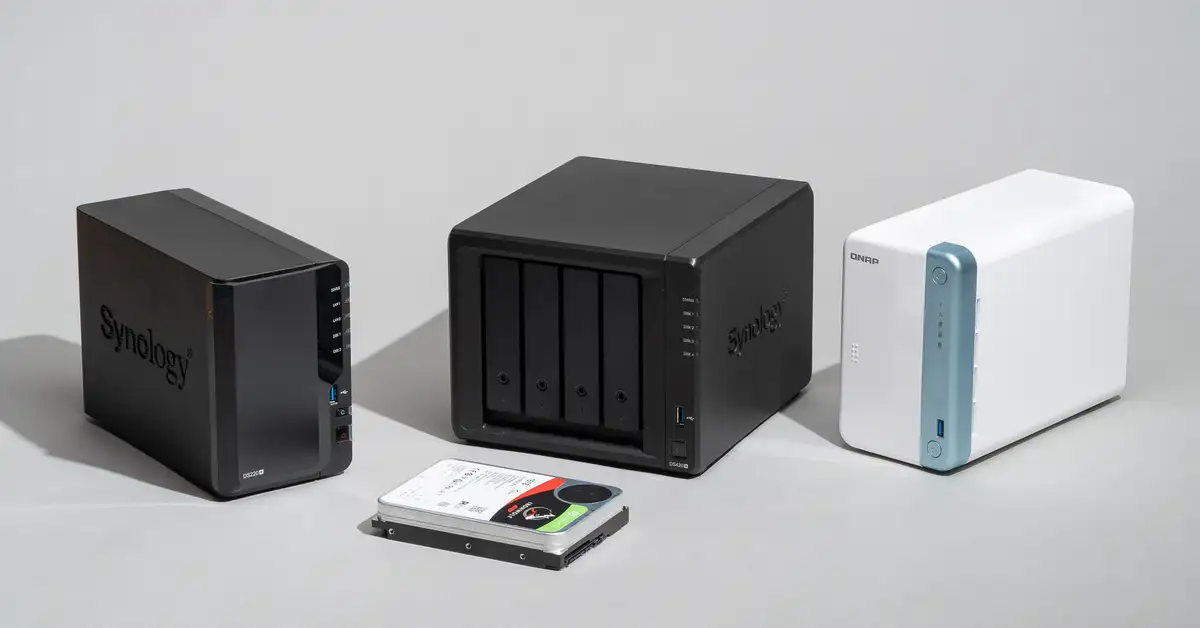Commercial public cloud storage service vs locally hosted NAS | ACE Data Recovery Article
Both paid cloud storage services and local NAS RAID arrays setups have their advantages and disadvantages
The advent of cloud storage has revolutionized the way businesses store and access their data. With the proliferation of cloud storage providers, users have an abundance of options to choose from when it comes to selecting a service that suits their needs. While paid cloud storage services and local Network Attached Storage (NAS) are both viable options for data storage, there are distinct advantages and disadvantages to consider.
Organizations need to weigh the benefits and drawbacks of NAS or cloud storage.
One potential solution for companies seeking greater control over their data is to create and host their own local storage services. This approach offers advantages such as avoiding cloud storage company policies and allowing users to retain control over their data. However, it also poses some notable drawbacks. For instance, the uptime of a locally hosted NAS is dependent on redundant electricity, hard drives (or SSD) reliability and download and upload speeds are limited by internet provider. Furthermore, data management, backup, and redundancy become the local IT responsibility, which can be challenging for some.

Shared responsibility model of commercial cloud storage
A research study in the United Kingdom found that a significant portion of IT decision-makers falsely believe that cloud providers are solely responsible for protecting and recovering data in the public cloud. Specifically, the study found that 27 percent of IT decision-makers held this belief, despite the fact that cloud providers such as Amazon Web Service (AWS), Microsoft Azure, or Google Cloud Platform (GCP) typically only offer basic data protection features.
One potential reason for this misconception is a lack of understanding about the shared responsibility model that governs data protection in the cloud. In this model, cloud providers are responsible for securing the underlying infrastructure of the cloud, while customers are responsible for protecting and recovering their own data. However, many IT decision-makers may not be aware of this division of responsibility, leading them to mistakenly assume that the cloud provider is solely responsible for data recovery of customer data.
Another potential factor contributing to this misconception is the rapid growth of cloud technology and the corresponding complexity of managing data in the cloud. As more and more companies move their data to the cloud, it can be difficult to keep up with the latest best practices and understand who is responsible for what aspects of data recovery. This can lead to confusion and misinformation about the roles and responsibilities of cloud providers and customers.
Regardless of the reasons behind this misconception, it is important for IT decision-makers to be aware of the shared responsibility model and to take right decisions for their own data recovery in the cloud. This means implementing appropriate security measures, data backup and recovery solutions, implementing hybrid cloud and local data storage, as well as regularly reviewing and updating their cloud data protection strategies.
Local NAS features, benefits and drawbacks

However, local RAID redundancy is straightforward, and businesses can obtain an offsite backup by enlisting a second location with the same NAS setup. The upfront cost of hosting one's cloud storage service can be a significant disadvantage compared to paid cloud storage services, which often offer low-cost monthly or yearly subscription options. Furthermore, adding storage capacity to a NAS can be challenging, and users must choose the right NAS RAID and hard drive or SSD configuration and capacity to meet their needs.
To illustrate, the Synology DiskStation, QNAP or Asus Lockerstor are an examples of NAS that offers scalability according to the user's needs. Ultimately, the decision to use paid cloud storage or host one's cloud storage service comes down to the user's preference for control, costs, and management. Both options have their advantages and drawbacks, and users must weigh them carefully before deciding which route to take.
You can choose between NAS and cloud based on their pros and cons
In conclusion, the advent of cloud storage has given businesses more options than ever before for storing and accessing their data. While both paid cloud storage services and local NAS RAID arrays setups have their advantages and disadvantages, it is important for IT decision-makers to understand the shared responsibility model of data protection in the cloud. By taking responsibility for their own data recovery strategy and implementing appropriate security measures and data backup solutions, businesses can ensure the safety and accessibility of their data. Ultimately, the decision to use paid cloud storage or host one's cloud storage service comes down to a user's preference for control, costs, and management. By carefully weighing these factors, businesses can make an informed decision about which disaster recovery option is right for them.
However, even the best NAS arrays can be stopped in their tracks by multiple drive failures. For example, in order for a RAID 5 to stop working two active drives need to fail. What are the chances of that happening? Far greater than you may think.
No matter the issue, ACE Data Recovery Services are the best option for recovering data from a hard drive, single or part on the NAS array. We have the expertise and tools necessary to access the data, even if it is inaccessible due to physical or logical NAS damage.
We're ready to answer your questions and start recovering your lost data from corrupted or damaged NAS RAID configurations. You can reach us right now toll free 1-877-304-7189.
